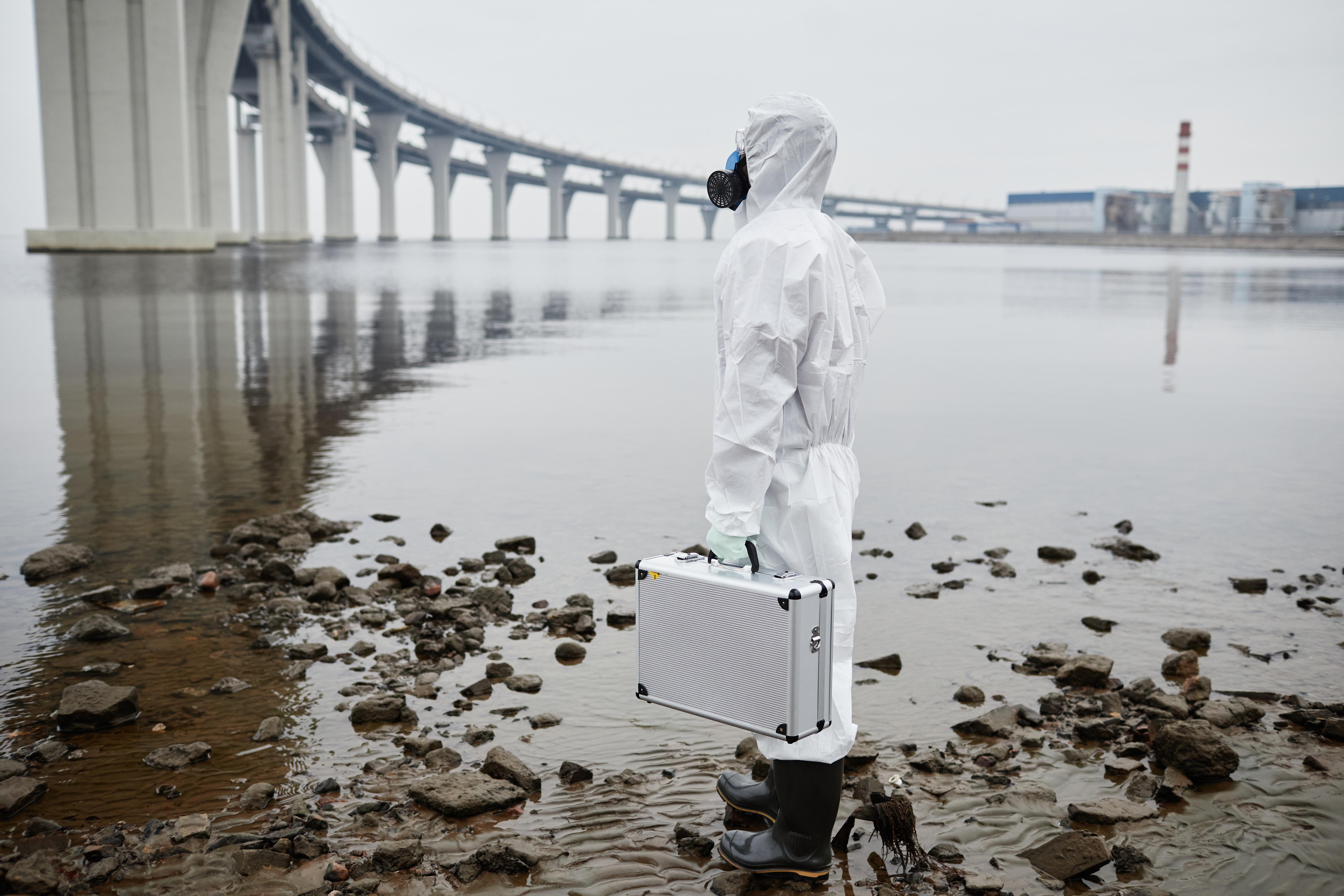11 PFAS Perils: Hidden "Forever Chemicals" Secretly Harming Your Health
In the modern world, our lives are intertwined with a myriad of chemicals, many of which remain unseen and unconsidered. Among these, PFAS chemicals, or per- and polyfluoroalkyl substances, have silently infiltrated various aspects of our daily lives. Often referred to as "forever chemicals" due to their persistence in the environment and human body, PFAS compounds have been used in countless products for their resistance to heat, water, and oil. However, their resilience is a double-edged sword. While they provide convenience and durability, they also pose significant risks to our wellbeing. This article delves into 11 ways these chemicals quietly impact our health, environment, and society, aiming to shed light on an often-overlooked issue.
1. The Ubiquity of PFAS in Consumer Products

PFAS chemicals are found in an astonishing array of consumer products, from non-stick cookware and waterproof clothing to food packaging and cleaning agents. Their widespread use is due to their unique properties that repel grease, water, and stains. However, this convenience comes at a cost. As these products are used and discarded, PFAS compounds leach into the environment, entering our water systems and food chains. The pervasive nature of these chemicals means that virtually everyone has been exposed to them, often without realizing it. This ubiquity raises concerns about cumulative exposure and the long-term effects on human health.
2. Contaminating Drinking Water Supplies

One of the most alarming impacts of PFAS chemicals is their contamination of drinking water supplies. Due to industrial discharges, firefighting foam runoff, and landfill leachate, PFAS have been detected in water sources worldwide. Even at low levels, these substances pose significant health risks, including developmental effects in infants, increased cancer risk, and liver damage. The challenge lies in their persistence; traditional water treatment methods are often ineffective at removing them. As a result, communities are left grappling with the difficult and costly task of ensuring safe drinking water, highlighting the urgent need for improved filtration technologies and regulatory measures.
3. The Impact on Human Health

The health implications of PFAS exposure are both extensive and concerning. Research has linked these chemicals to a range of health issues, including thyroid disease, immune system disruption, and hormonal imbalances. Particularly troubling is their potential impact on vulnerable populations, such as pregnant women and children. PFAS can cross the placental barrier, affecting fetal development and leading to low birth weights. Moreover, they can be transferred through breast milk, prolonging exposure during critical stages of growth. Understanding these health risks is crucial for developing effective strategies to mitigate exposure and protect public health.
4. Environmental Persistence and Bioaccumulation

PFAS chemicals are notorious for their environmental persistence, resisting degradation for decades. This longevity allows them to bioaccumulate in wildlife, particularly in aquatic ecosystems. Fish and other marine organisms absorb PFAS through contaminated water, which then moves up the food chain, reaching higher concentrations in predators. This bioaccumulation not only threatens biodiversity but also poses risks to human health through the consumption of contaminated seafood. The persistence and bioaccumulative nature of PFAS underscore the urgent need for global action to reduce their release into the environment.
5. Challenges in Regulation and Policy

Despite the known risks, regulating PFAS chemicals presents significant challenges. Their widespread use and the vast number of compounds—over 4,700 identified—make comprehensive regulation daunting. Moreover, the chemical industry has historically resisted stringent controls, citing economic impacts. While some regions have taken steps to limit PFAS use, inconsistent regulations and lack of international standards hinder effective management. Policymakers face the difficult task of balancing public health concerns with industrial interests, necessitating collaborative efforts to establish robust, science-based regulations that prioritize safety and sustainability.
6. Economic Implications of PFAS Contamination

The economic impact of PFAS contamination is substantial, affecting both public and private sectors. Communities facing contaminated water supplies must invest heavily in advanced filtration systems and remediation efforts, often with limited funding. Industries reliant on PFAS face potential financial losses due to regulatory changes and consumer backlash. Furthermore, healthcare costs associated with PFAS-related illnesses add to the economic burden. Addressing these challenges requires innovative solutions and investment in research and development to identify safer alternatives, ensuring economic resilience while protecting public health.
7. The Role of Industry and Innovation

Industries that have historically relied on PFAS are now at a crossroads, needing to innovate and adapt to changing regulations and consumer demands. Some companies are exploring alternative materials that offer similar benefits without the environmental and health risks. This shift towards sustainable practices not only reduces PFAS emissions but also aligns with growing consumer preferences for eco-friendly products. Collaboration between industry leaders, scientists, and policymakers is essential to drive innovation, develop effective substitutes, and facilitate the transition to a PFAS-free future.
8. Public Awareness and Advocacy

Public awareness and advocacy play crucial roles in addressing the PFAS issue. As more people learn about the risks associated with these chemicals, there is growing demand for transparency and accountability from both manufacturers and regulators. Grassroots movements and environmental organizations have been instrumental in raising awareness, pushing for stricter regulations, and supporting affected communities. Educating the public about PFAS and empowering individuals to make informed choices can drive change and foster a collective effort to reduce exposure and promote environmental health.
9. The Global Dimension of PFAS Pollution

PFAS pollution is a global issue, transcending borders and affecting ecosystems worldwide. Their persistence and ability to travel long distances through air and water make international cooperation essential. Efforts to address PFAS contamination must involve shared research, policy harmonization, and collaborative cleanup initiatives. Global treaties and agreements, similar to those addressing other persistent organic pollutants, could provide a framework for coordinated action. By recognizing the interconnected nature of PFAS pollution, countries can work together to protect the planet and its inhabitants from these pervasive chemicals.
10. Scientific Research and Future Directions

Ongoing scientific research is critical to understanding the full scope of PFAS impacts and developing effective solutions. Studies continue to explore the mechanisms by which these chemicals affect human health and the environment, providing valuable insights for risk assessment and management. Emerging technologies, such as advanced filtration systems and innovative remediation techniques, offer hope for reducing PFAS contamination. Continued investment in research and development is essential to identify safer alternatives, improve detection methods, and enhance our ability to mitigate the effects of PFAS on a global scale.
12. Personal Actions to Reduce Exposure

While systemic change is necessary, individuals can also take steps to reduce their personal exposure to PFAS. Being mindful of product choices, such as opting for PFAS-free cookware and avoiding stain-resistant treatments, can minimize contact with these chemicals. Additionally, advocating for and supporting policies that regulate PFAS use and promote transparency can contribute to broader societal change. By making informed decisions and encouraging others to do the same, individuals can play a role in reducing the prevalence of PFAS and protecting their health and the environment.
Towards a PFAS-Free Future

The impact of PFAS chemicals on our wellbeing is profound and multifaceted, affecting health, the environment, and economies worldwide. Addressing this issue requires a comprehensive approach, involving regulation, innovation, and public engagement. As awareness grows and scientific understanding advances, there is hope for a future where PFAS no longer pose a threat to our wellbeing. By working together—governments, industries, scientists, and individuals—we can pave the way for a healthier, more sustainable world, free from the silent menace of PFAS chemicals.